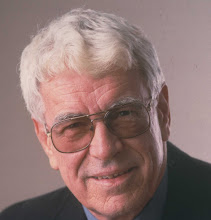“Environmentalism has become a sort of mythology of death – passionate, lyrical, righteous and hopeless,” says Chris Turner. It has “failed as a common language of hope or a ritual of rebirth. It has failed as myth.”
Eloquent – and painfully accurate. Fear and hopelessness are useless emotions – emotions which make people numb and passive, preventing them from taking useful action. As Turner notes, would all those people in Washington have been inspired if Martin Luther King had stood before them and declared, “I have a nightmare today?”
So Turner set out to find what he calls “the archipelago of hope,” the places and initiatives in the world where people are fully aware of the environmental crisis – but are attacking the problems with imagination, exuberance and optimism. The result is a stimulating new book, The Geography of Hope (Random House Canada, $34.95).
Turner takes as his mantra Kenneth Boulding's observation, “Anything that exists is possible.” He sets out to see not only what might be, or could be, but what is. Is there, for instance, a really prosperous city where people normally travel on first-class public transit, where car ownership is restricted and heavily taxed, where the remaining cars are often powered by hydrogen fuel cells? Well, yes, that would be Singapore. And if Singaporeans can do it, so can others.
Are there houses which are entirely sustainable, generating their own heat and electricity, processing their own wastes, growing some of their own food? Yes, in Germany, Thailand and New Mexico. In Manchester a commercial tower entirely clad in photo-voltaic cells generates enough energy for 61 British homes. It exists, so it's possible.
Is there a first-world community powered entirely by renewable energy? Yep – that's the island of Samsø, in Denmark. The OPEC oil shocks of the 1970s made the Danes realize that they were reliant on oil imports for 94% of their energy. So Denmark began taxing emissions and consumption – doing the sort of thing that Stephane Dion is now proposing for Canada – and invested heavily in the renewable energy industry. Denmark is now the planet's highest per capita producer of wind energy, and it exports wind turbines to the world.
I n 1997, the Danish government invited the country's 78 inhabited islands to compete to become Denmark's showcase “Renewable Energy Island.” Samsø won. At the time, it was deriving 92% of its electricity and 85% of its heat from fossil fuels. Eight years later, it was obtaining all of its heat and more than 100% of its electricity from solar panels and wind generators, exporting its surplus green power to other parts of Denmark. Its heating costs were down by 20%, and its CO2 emissions had been reduced by 140%.
Even more remarkable, says Turner, was the deliberate, thoughtful process which persuaded conservative Danish farmers and villagers to sign up for leading-edge green technology. The proponents did it by buying a fruit press and lots of beer, and going out to the villages to press apples into juice and share a few beers, and talk about working together on a beneficial project that would save everyone money. It was, says Turner, a classic “viral marketing” campaign.
Does that sound familiar? That's Moses Coady and Jimmy Tompkins, holding study sessions and kitchen meetings all over eastern Nova Scotia, slowly building a whole co-operative economy. That's the citizens of Halifax, spending a year talking about what to do with their own garbage and coming up with a composting and recycling program that leads the world – a story that appears in Turner's book.
Turner tackles some important themes along the way – recycling, for example, which almost always “down-cycles” materials, making them progressively less sophisticated and useful. A variant is Extended Producer Responsibility, the scheme favoured in Europe which makes the manufacturer responsible for the entire life-cycle of a product. But neither of these solutions, says Turner, really tackles the fundamental problem, which is a whole system of lousy industrial design.
Better design also exists, and Turner finds it – Interface Carpet's sustainable factory in Georgia, the long-established eco-spiritual community in Findhorn, Scotland, a Colorado shopping mall converted into a real town centre, bio-gas digesters and micro-hydro sites in rural Thailand. And the point is that you know it's possible because it exists – the technology, the knowledge, the examples, everything.
What really interests Turner are the social processes that can transform our vision and behaviour and thus bring the new, sustainable world into being. Those processes require optimism, excitement, commitment. They're rooted in community, in the happiness of doing good things in company with others. They're rooted in hope.
“We gotta start thinking of ourselves as what we are, which is the future,” says one green ad guru. The future is cool, hip, smart and exciting. It's fun. Show it to people, and they'll want to live there – and that's how you change the world.
-- 30 --
Monday, July 14, 2008
The Geography of Hope
Subscribe to:
Post Comments (Atom)

No comments:
Post a Comment